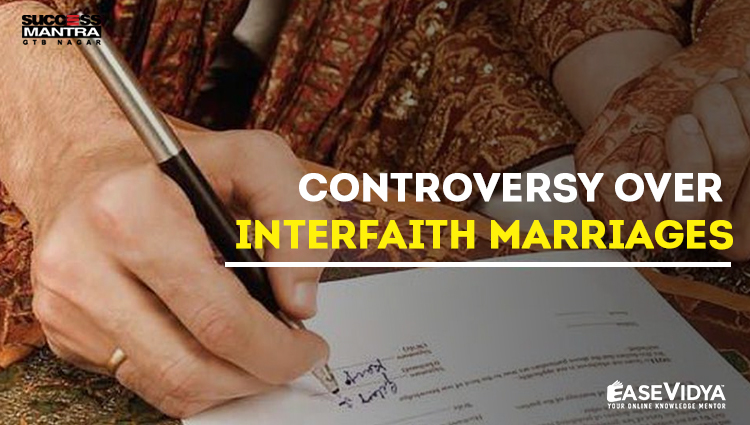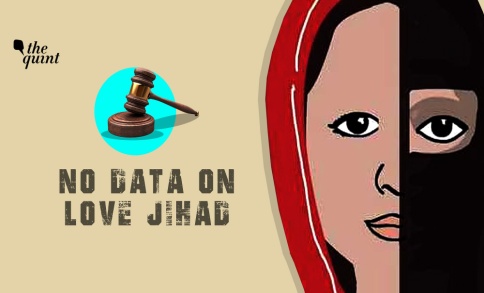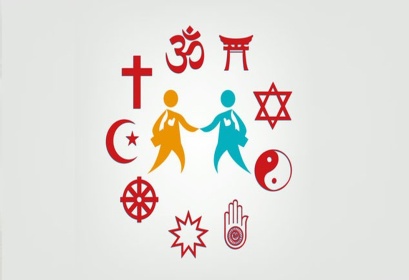
CONTROVERSY OVER INTERFAITH MARRIAGES IN INDIA
CONTROVERSY OVER INTERFAITH MARRIAGES IN INDIA

Over the centuries, casteism and religionism has prevailed in India. Despite several laws, the social stigma for interfaith marriages still exists in the Indian Society. Recently, several state governments have shown concerns about enacting proper laws to stop marriages which they refer to as ‘Love Jihad’. However, contemplating laws over interfaith marriage directly violates several rights of people such as right to freedom, personal liberty and right to life. In a recent judgment, the Allahabad High Court observed that religious conversion for the purpose of marriage is unacceptable. The court cited its own 2014 judgment, which had reiterated the Supreme Court’s observation in the Lily Thomas vs Union of India case that conversion of a person to Islam can only be considered bona fide if he or she is a major, of sound mind, and is ready to embrace Islam by his or her free consent and the faith which he or she holds in Allah or Prophet Muhammad. After this judgment, sensing vindication of their campaign against the so-called ‘love jihad‘, Uttar Pradesh Chief Minister Yogi Adityanath and other BJP leaders are now talking about an anti-conversion law for their states.
CONCEPT OF INTERFAITH MARRIAGES

Interfaith marriage, sometimes called a "mixed marriage", is marriage between spouses professing different religions. Although interfaith marriages are most often contracted as civil marriages, in some instances they may be contracted as a religious marriage. This depends on religious doctrine of the two parties' religions; some of which prohibit interfaith marriage, but others allow it in limited circumstances. Several major religions are mute on the issue, and still others allow it with requirements for ceremony and custom. For ethno-religious groups, resistance to interfaith marriage may be a form of self-segregation. In an interfaith marriage, each partner typically adheres to their own religion, but an important point is in what faith the children will be raised.
ISSUES WITH INTER-FAITH MARRIAGES
• Interfaith marriages are believed to be a forced conversion of one of the spouses (mostly women).
• As per the Muslim Personal law, in order to get married to a non-Muslim, conversion of religion is the only way.
• Hindu religion allows only monogamy and those who want to marry the second time take another course. There is no provision regarding caste determination of children born out of such marriages.
• The Special Marriage Act, 1954 is not compatible with backwardness of the society.
• There is debate over the validity of Article 226 in context of annulling the interfaith marriage by high court.
• There have been instances where some men have concealed their religious identity before marrying women of other religions. However, these instances are sporadic and cannot be termed as a ‘conspiracy’ or ‘love jihad‘.
THE SPECIAL MARRIAGE ACT, 1954

• The Special Marriage Act, 1954 is an Act of the Parliament of India enacted to provide a special form of marriage for the people of India and all Indian nationals in foreign countries, irrespective of the religion or faith followed by either party. The Act originated from a piece of legislation proposed during the late 19th century. Marriages solemnized under the Special Marriage Act are not governed by personal laws. This Act includes Hindus, Muslims, Christians, Sikhs, Jains, and Buddhists marriages. This act applies to all Indian states, except Jammu & Kashmir. This Act applies not only to Indian citizens who belong to different castes and religions but also to Indian nationals who live abroad.
- The Special Marriage Act, 1954 replaced the old Act III, 1872. The new enactment has 3 major objectives:
- To provide a special form of marriage in certain cases.
- To provide for registration of certain marriages and.
- To provide for divorce.
• Requirements: The marriage performed under the Special Marriage Act, 1954 is a civil contract and accordingly, there need be no rites or ceremonial requirements. The parties have to file a Notice of Intended Marriage in the specified form to the Marriage Registrar of the district in which at least one of the parties to the marriage has resided for a period of not less than thirty days immediately preceding the date on which such notice is given. After the expiration of thirty days from the date on which notice of an intended marriage has been published, the marriage may be solemnized, unless it has been objected to by any person.
• The marriage may be solemnized at the specified Marriage Office.
• Conditions for Marriage: The bridegroom must be at least 21, and at the time of the marriage, the bride must be at least 18 years of age. This is the minimum age limit respectively for a boy/girl to marry. At the time of their marriage, both parties must be monogamous; i.e., they must be unmarried and at that time should not have any living spouse. In order to be able to decide for themselves, the parties should be mentally fit, i.e., they must be sane at the time of marriage.
CHALLENGES WITH CONTEMPLATING LAWS
Contemplating laws to regulate matrimonial relationships between two consenting adults would not be just against the constitutional guarantees but would offend the very notion of individuality and basic freedoms. Interference of the law in an individual’s choice of marriage violates the existing constitutional rights such as the Right to equality, Right to Freedom & Personal Liberty, Freedom of Religion and Right to Life.
Article 21: It declares that no person shall be deprived of his life or personal liberty except according to the procedure established by law. This right is available to both citizens and non-citizens.
Article 25 of the Indian constitution provides the freedom to practice any religion of one’s choice and personal laws of the religions have specified various laws relating to marriage for the followers of that religion. Hence, in India inter-faith marriages are allowed as the constitution allows one to convert to a different religion from what one was born with and further the personal laws of the religion have provisions.
CONCLUSION
In order to avoid inclusion of any further laws, there should be acceptance of the special marriage act, 1954 at the mental and social level. The rights should not be exploited; conversion of religion for marriage only is not at all wise. The marriage of two adults is a complete matter of their own choice; neither a law is to impose any decision, nor any individual. The freedom of decision of his/ her marriage shall lie with the person only. The need is to accept the fact.
QUESTIONS (1-5)
Q.1 Which of the following statements is/are incorrect in the context of concerns over interfaith marriages?
A. Interfaith marriages are believed to be a forced conversion
B. Hindu religion allows polygamy: ANSWER
C. The Special Marriage Act, 1954 is not compatible with backwardness of the society.
D. None of the above
Q.2 Which of the following factors are not factors that should be taken into account when deciding whether a marriage is a non-marriage?
A. Whether the ceremony or event set out or purported to be a lawful marriage.
B. Whether it bore all or enough of the hallmarks of marriage.
C. Whether an impartial observer would believe the ceremony or event constituted a lawful marriage: ANSWER
D. The reasonable perceptions, understandings, and beliefs of those in attendance.
Q.3 To which of the following States the ‘Special Marriage Act, 1954’ does not apply?
A. Jammu & Kashmir: ANSWER
B. Tripura
C. Meghalaya
D. Nagaland
Q.4 Which of the following articles declares that no person shall be deprived of his life or personal liberty except according to the procedure established by law?
A. Article 14
B. Article 19
C. Article 21: ANSWER
D. Article 32
Q.5 The Special Marriage Act, 1954 replaced the old Act III, 1872. Which of the following statements is/are correct about the objective of the new enactment?
A. To provide a special form of marriage in certain cases.
B. To provide for registration of certain marriages.
C. To provide for divorce.
D. All of the above: ANSWER












0 Comment